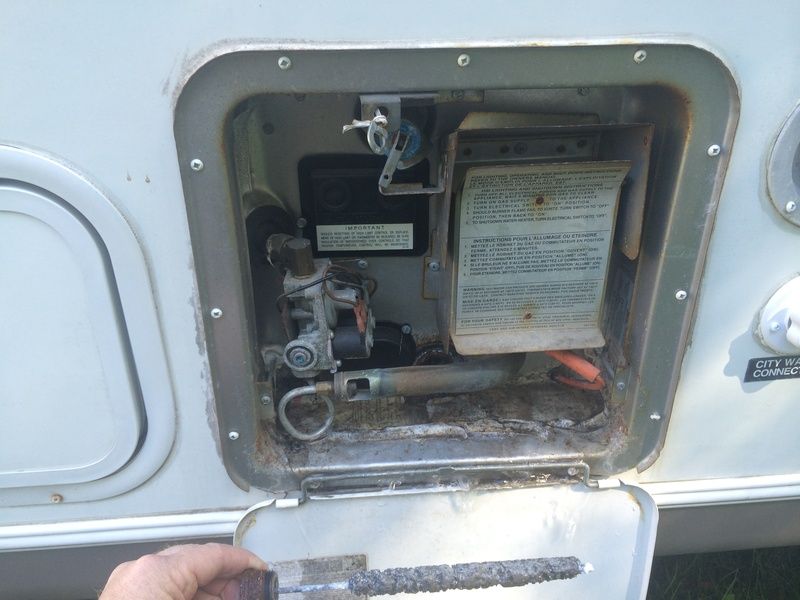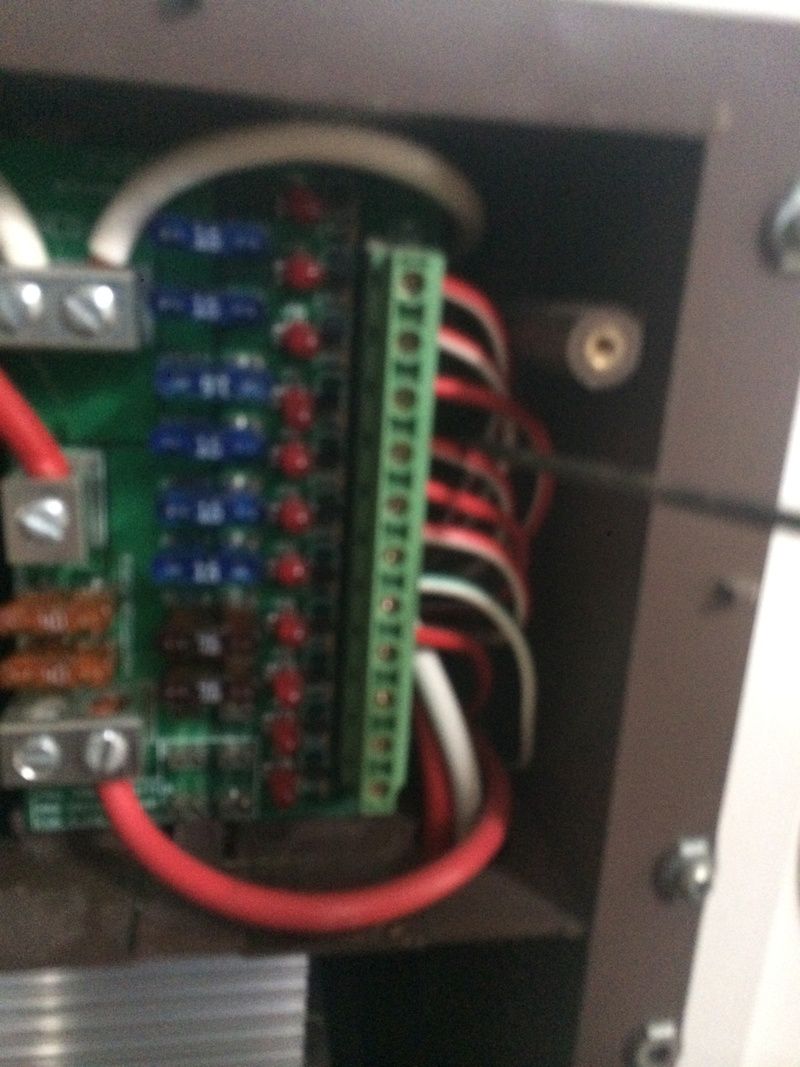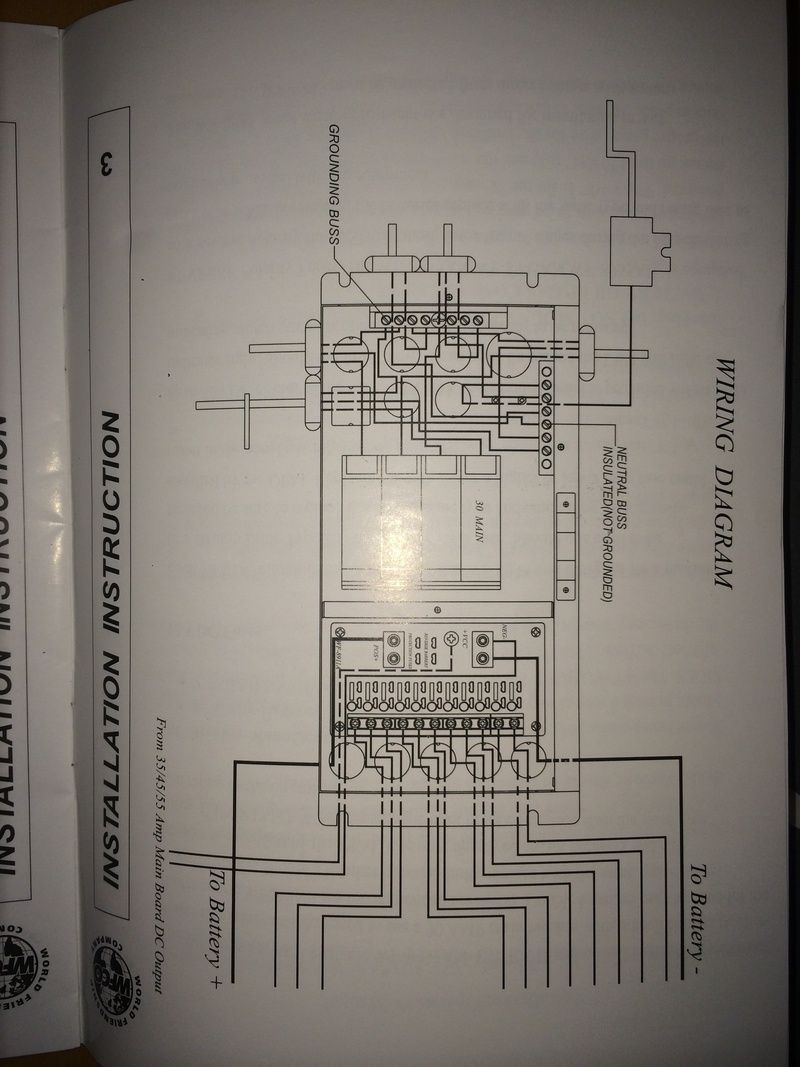- Good Sam Community
- Everything RV
- Technical Issues
- Re: LP problems, no furnace no water heater
- Subscribe to RSS Feed
- Mark Topic as New
- Mark Topic as Read
- Float this Topic for Current User
- Bookmark
- Subscribe
- Mute
- Printer Friendly Page
LP problems, no furnace no water heater
- Mark as New
- Bookmark
- Subscribe
- Mute
- Subscribe to RSS Feed
- Permalink
- Report Inappropriate Content
Apr-09-2016 05:15 PM

- Mark as New
- Bookmark
- Subscribe
- Mute
- Subscribe to RSS Feed
- Permalink
- Report Inappropriate Content
Apr-12-2016 06:22 AM

- Mark as New
- Bookmark
- Subscribe
- Mute
- Subscribe to RSS Feed
- Permalink
- Report Inappropriate Content
Apr-12-2016 02:51 AM
westend wrote:
Well done rookie, lol! 😉
This is a good example of how a meter can lead to a proper diagnosis. A meter should be in the toolbox of every RV owner, IMO. The problem is that folks that have never owned one are in fear of using one, the fear of the unknown. The reality is that learning the various functions of a meter is easy and it can lead to prompt diagnosis of failures in the two electrical systems of an RV. A meter is also useful to diagnose exterior light failures which are powered by the tow vehicle power.
There have been Forum member that have posted electrical problems and torn apart a whole furnace replacing parts as they go because they don't want to use a meter.
Glad to hear the fix was simple.
Op here. I've never been afraid of a volt meter. I have to have it to Maintain my 5 Hondas ranging from 1966-2001, my ski nautique and my garden tractor. Once someone suggested DC problem I had to rule the battery out thus my $89 "waste" even thought I knew the old battery was fine. And then I said it's just a matter of tracing out the path. Once I had confirmed 12.63 volts coming in from the primary battery load carrying conductors I said, ok. I'm good to here now where does it start to break down. A second later the disconnected wire was obvious!! The seller didn't even know why that wire would have been removed as he has been trying to coach me along with you all. So thank you RV FORUM very much for pointing me in the right direction. I will not be returning the battery, the old camper battery will now go in my ski boat as the old battery I took out failed last year at time of winterization. I was happy to see a date sticker of sept 2003 on it. 12 years on the old battery. I think I got my money's worth out of that one!! Happy camping and back to moto' s and fining a proper tow rig!!

- Mark as New
- Bookmark
- Subscribe
- Mute
- Subscribe to RSS Feed
- Permalink
- Report Inappropriate Content
Apr-11-2016 11:40 PM
- Mark as New
- Bookmark
- Subscribe
- Mute
- Subscribe to RSS Feed
- Permalink
- Report Inappropriate Content
Apr-11-2016 11:17 PM
This is a good example of how a meter can lead to a proper diagnosis. A meter should be in the toolbox of every RV owner, IMO. The problem is that folks that have never owned one are in fear of using one, the fear of the unknown. The reality is that learning the various functions of a meter is easy and it can lead to prompt diagnosis of failures in the two electrical systems of an RV. A meter is also useful to diagnose exterior light failures which are powered by the tow vehicle power.
There have been Forum member that have posted electrical problems and torn apart a whole furnace replacing parts as they go because they don't want to use a meter.
Glad to hear the fix was simple.
'71 Starcraft Wanderstar -- The Cowboy/Hilton
- Mark as New
- Bookmark
- Subscribe
- Mute
- Subscribe to RSS Feed
- Permalink
- Report Inappropriate Content
Apr-11-2016 09:58 PM
Looks like the Water Heater is feed from that fuse also
Fuse #7 & #8 are 7.5A but label shows #6 & 7/8????
It would help you in future if you went thru those fuses and correctly ID them & relabel ALL 8 of them
2007 DODGE 3500 QC SRW 5.9L CTD In-Bed 'quiet gen'
2007 HitchHiker II 32.5 UKTG 2000W Xantex Inverter
US NAVY------USS Decatur DDG31
- Mark as New
- Bookmark
- Subscribe
- Mute
- Subscribe to RSS Feed
- Permalink
- Report Inappropriate Content
Apr-11-2016 03:04 PM

I picked up a new battery today and it measured 12.64
Volts my lousy old one was only Measuring 12.42v so I changed the and and
Actually pulled the cover of the breaker panel. Once I sat down with my volt meter I found a wire that was loose. Wait it's not Even connected. Once I connected it. The heat fired. The water heater fired and I'm getting a reaction from the fridge. The one I'm pointing to with my screw driver

- Mark as New
- Bookmark
- Subscribe
- Mute
- Subscribe to RSS Feed
- Permalink
- Report Inappropriate Content
Apr-11-2016 02:32 PM
smkettner wrote:Undercover Poe wrote:
OP here. I had a few problems with my replies. I leave the battery on a concrete floor in heated basement and use a piece of 2" rigid insulation under it. I also had the battery on charge while trouble shooting the camper. Wouldn't that simulate a perfect battery?
Sure as long as voltage gets to the actual item or appliance.
Need 10.5 to 15.0 volts for RV stuff to operate.
Back to just playing the odds here. The items that are not working all have computer boards that measure the voltage. For example if the voltage is too low to run the furnace fan fast enough to vent the propane gas out, the furnace will not fire.
How you stored the battery was good with the foam. I would still look to make sure the plates are covered with (distilled) water. If they are exposed then that's a problem (might not be the real cause, but still a problem.)
Now that you have the meter out, I would check the voltage coming into the computer board of the furnace. Should be the red wire. This will tell you if you got power, and if you do how much. My memory was wrong with the 12.5, it is 10.5 for the furnace to work. Less then that and the fan does not spin fast enough to vent the gas.
spent two days in freezing weather (the town/park lost all power) before my furnace hit the 10.5 magical threshold. You think I would remember that number after that little adventure. :S
- Mark as New
- Bookmark
- Subscribe
- Mute
- Subscribe to RSS Feed
- Permalink
- Report Inappropriate Content
Apr-11-2016 01:13 PM
Even if you reversed the battery cables and blew the Two 40A Reverse Polarity Fuses the converter would still provide your RV with the necessary DC Voltage.
Blown Reverse Polarity fuses protect converter/charger from incorrect battery install. They do NOT prevent converter from supplying the DC Dist Individual Fuses
So check those 40A fuses just so you know battery can be recharged from converter and that Battery can supply DC Dist w/o converter.
But you need to test that converter DC output right at those terminals and the lead/load sides of those fuse clips. No DC on lead side of those fuse clips.......bad board
DC Voltage requirements for propane appliances to operate is 10.5V to 15V (fridge panel lights will illuminate down to 4.5V....IF there is DC)
2007 DODGE 3500 QC SRW 5.9L CTD In-Bed 'quiet gen'
2007 HitchHiker II 32.5 UKTG 2000W Xantex Inverter
US NAVY------USS Decatur DDG31
- Mark as New
- Bookmark
- Subscribe
- Mute
- Subscribe to RSS Feed
- Permalink
- Report Inappropriate Content
Apr-11-2016 09:30 AM
Undercover Poe wrote:
OP here. I had a few problems with my replies. I leave the battery on a concrete floor in heated basement and use a piece of 2" rigid insulation under it. I also had the battery on charge while trouble shooting the camper. Wouldn't that simulate a perfect battery?
Sure as long as voltage gets to the actual item or appliance.
Need 10.5 to 15.0 volts for RV stuff to operate.
- Mark as New
- Bookmark
- Subscribe
- Mute
- Subscribe to RSS Feed
- Permalink
- Report Inappropriate Content
Apr-11-2016 09:21 AM
- Mark as New
- Bookmark
- Subscribe
- Mute
- Subscribe to RSS Feed
- Permalink
- Report Inappropriate Content
Apr-11-2016 06:25 AM
Undercover Poe wrote:John&Joey wrote:Undercover Poe wrote:
... I assumed the battery isn't really full of life. It's probably old. Should I unplug from shore and try a new battery?
I always hate throwing money at something trying to fix an unknown problem. First I would take a look at the water level in the battery. I once had a rig where it boiled mostly away over the winter while I was plugged in. When I went to pull in the slides they did not work. I guess 13.2 off the converter wasn't enough after all without a good battery in the system.
So check the battery, top off if it's needed (Google it if you don't know the correct procedure,) then leave it plugged in to shore power overnight. Disconnect your battery and check it with the meter. Google volts for a battery and the charts will come up for state of charge. Wouldn't putting a charger on it simulate a prefect battery?
Your gas appliances have 12v gas safety features. If you have less then a certain voltage (I think it's 12.5v) the safety features will not allow them to run. So odd that all of your appliances won't work, your gas stove (that doesn't have 12v safety on it) does. So playing the odds, you need to figure out what they all have in common which is the battery.i did put a charger on the battery to simulate a perfect battery
Might not be it, but why make mountains out of mole hills in the beginning of troubleshooting.
- Mark as New
- Bookmark
- Subscribe
- Mute
- Subscribe to RSS Feed
- Permalink
- Report Inappropriate Content
Apr-11-2016 06:24 AM
John&Joey wrote:Undercover Poe wrote:
... I assumed the battery isn't really full of life. It's probably old. Should I unplug from shore and try a new battery?
I always hate throwing money at something trying to fix an unknown problem. First I would take a look at the water level in the battery. I once had a rig where it boiled mostly away over the winter while I was plugged in. When I went to pull in the slides they did not work. I guess 13.2 off the converter wasn't enough after all without a good battery in the system.
So check the battery, top off if it's needed (Google it if you don't know the correct procedure,) then leave it plugged in to shore power overnight. Disconnect your battery and check it with the meter. Google volts for a battery and the charts will come up for state of charge. Wouldn't putting a charger on it simulate a prefect battery?
Your gas appliances have 12v gas safety features. If you have less then a certain voltage (I think it's 12.5v) the safety features will not allow them to run. So odd that all of your appliances won't work, your gas stove (that doesn't have 12v safety on it) does. So playing the odds, you need to figure out what they all have in common which is the battery.
Might not be it, but why make mountains out of mole hills in the beginning of troubleshooting.
- Mark as New
- Bookmark
- Subscribe
- Mute
- Subscribe to RSS Feed
- Permalink
- Report Inappropriate Content
Apr-11-2016 06:09 AM
Undercover Poe wrote:
... I assumed the battery isn't really full of life. It's probably old. Should I unplug from shore and try a new battery?
I always hate throwing money at something trying to fix an unknown problem. First I would take a look at the water level in the battery. I once had a rig where it boiled mostly away over the winter while I was plugged in. When I went to pull in the slides they did not work. I guess 13.2 off the converter wasn't enough after all without a good battery in the system.
So check the battery, top off if it's needed (Google it if you don't know the correct procedure,) then leave it plugged in to shore power overnight. Disconnect your battery and check it with the meter. Google volts for a battery and the charts will come up for state of charge.
Your gas appliances have 12v gas safety features. If you have less then a certain voltage (I think it's 12.5v) the safety features will not allow them to run. So odd that all of your appliances won't work, your gas stove (that doesn't have 12v safety on it) does. So playing the odds, you need to figure out what they all have in common which is the battery.
Might not be it, but why make mountains out of mole hills in the beginning of troubleshooting.
On edit:
BTW, when you stored the battery inside was it on a concrete floor?
- Mark as New
- Bookmark
- Subscribe
- Mute
- Subscribe to RSS Feed
- Permalink
- Report Inappropriate Content
Apr-11-2016 02:52 AM
- VIDEO: Maximum Head Cooling Ford 4.6L 5.4L 6.8L Triton Engines in Tow Vehicles
- Help w/ hot water heater in DIY Maintenance
- Girard Tankless Water Heater III - Error E7 in Technical Issues
- Atwood hydro flame model 2H2C Two stage Furnace Digital Thermostat in Technical Issues
- Propane smell at furnace exhaust port in Technical Issues






